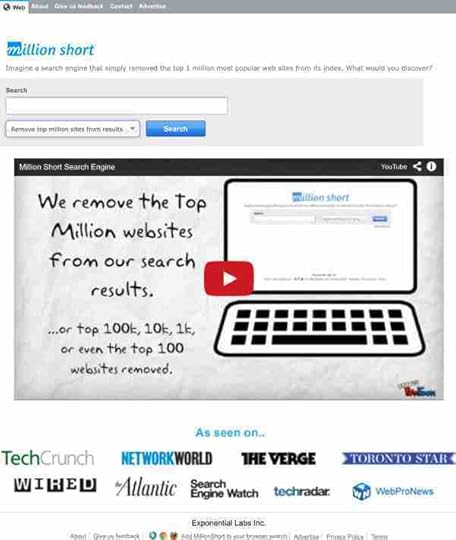Two Internet Search Techniques You Should Have in Your Toolbox
The internet, the repository of the world’s collective knowledge is available to more and more people around the globe. But to get the most out of it requires mastering how Google (and other search engines) work and the techniques to quickly find the best information in the vast amount of data available on the Internet.
One of the key things to be aware of is how Google actually decides what results it will show you and in what order (see Chapter Four in Think Smarter in a Digitally Enabled World: A 21st Century Life Manual for Amplifying Your Knowledge, Achieving Your Potential & Changing the World for a detailed explanation of how to master the art of internet search). At a high level, Google will provide you results up front that are most often cited or linked to by others (or in other words, most popular).
However, that doesn’t mean that’s the best information, only that it’s the most often referred to. There could be, and definitely are gems located much further down the results page. What this means though is that you’ll have to scroll through a lot of results to find them. That’s not too difficult to go through the first 100-200 results, but what about the information that’s buried deep in a 90,000,000 results search?
Millionshort.com
Fortunately, there is now a relatively new internet search tool which can help us get to those hidden gems. It’s called MillionShort.com. MS describes themselves as more of a discovery engine that allows you to REMOVE the top million (or top 100k, 10k, 1k, 100) sites from the results set.
Million Short makes it easy to discover sites that just don’t make it to the top of the search engine results for whatever reason (poor SEO, new site, small marketing budget, competitive keyword(s) etc.). Most people don’t look beyond page 1 when doing a search and now they don’t have to.
Give millionshort.com a try and play around with the settings for how many results to remove (100, 1k, 10K, 100k, or 1 million). You’ll find some interesting things that you normally would not have seen.
Google Compare Command
The second Google tip is a way to have Google compare two foods based on information it has in it’s vast knowledge base. When you use the word compare in a sentence such as compare almonds and walnuts, Google will create a table for you in the following manner:
I have only been able to get the table comparison for food items. But it’s a handy tool for those of us trying to pay more attention to the foods we eat (well, at least once the holiday’s are done…).
Happy Searching,
➨ If you liked this post, please forward post it your various social networks.
➨ I would love to hear what internet search techniques and tools you have found particularly useful. Please leave a comment below.
If you want to gain more insight into the topics in this post, please see Think Smarter in a Digitally Enabled World: A 21st Century Life Manual for Amplifying Your Knowledge, Achieving Your Potential & Changing the World. The book is about changing the world through mastering holistic systems thinking. With massive technological change and globalization affecting almost every facet of our lives, the “Killer App” in the 21st century will be the ability to Continuously Learn and leverage our capability for Proactive Thought. With the Internet, we now have instantaneous access to the world’s collective knowledge – which grows exponentially every year. Those who can access it, analyze it, make sense of it, organize it, and put it into action will deeply accelerate their personal and professional success. It will require using a new set of thinking tools, fully harnessing our digital technologies and apps, understanding how to see the systemic interconnections in our daily lives, and learning to maximize the combination of our logical left brain and our intuitive, creative, and spiritual right brain. The book gives the reader the tools, techniques, and strategies to accomplish this goal.
The post Two Internet Search Techniques You Should Have in Your Toolbox appeared first on Think Smarter World.





